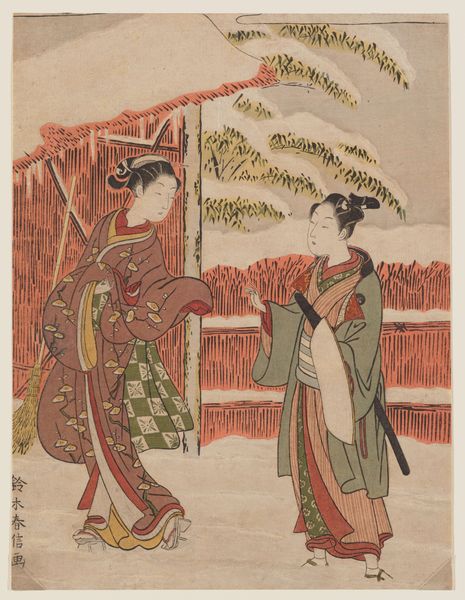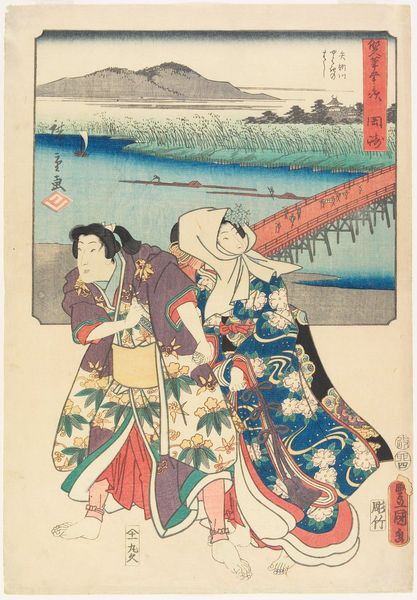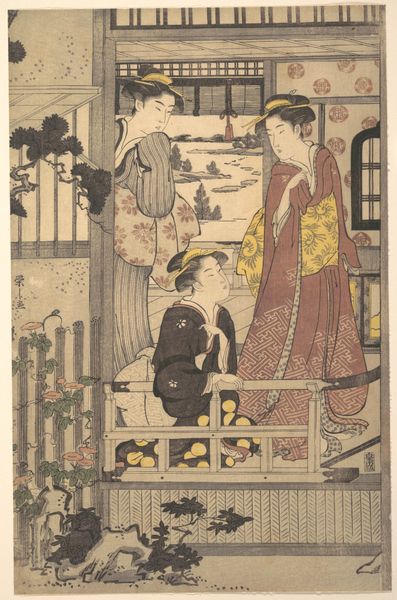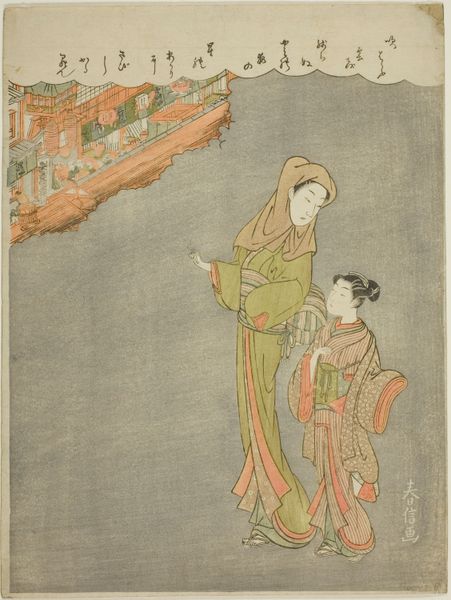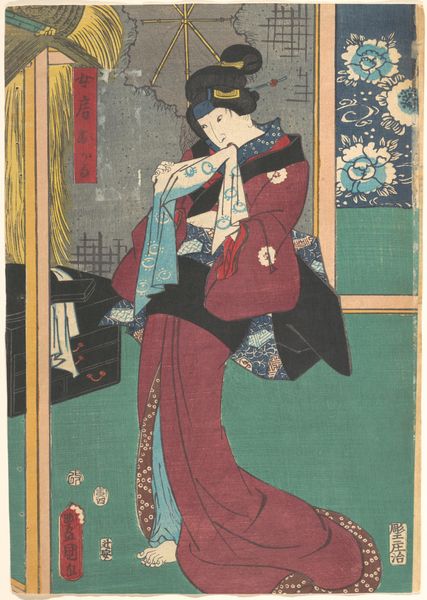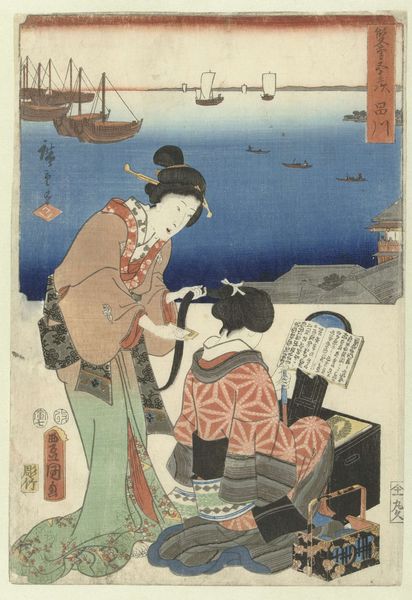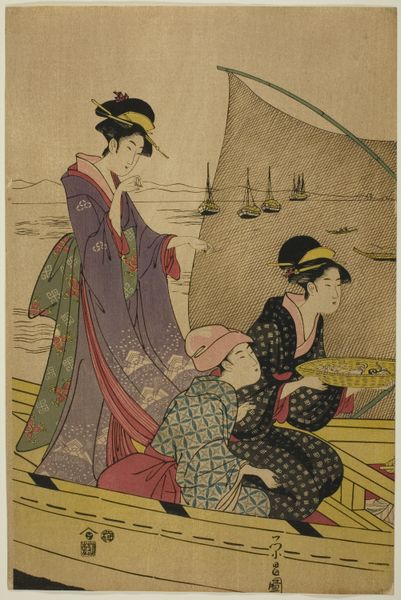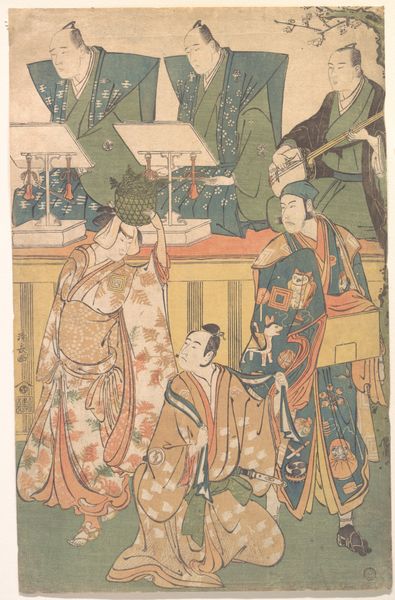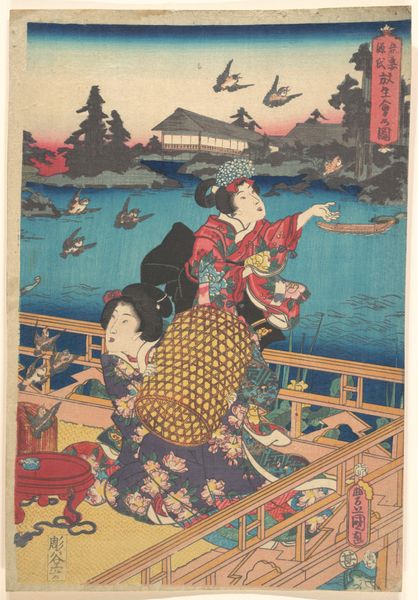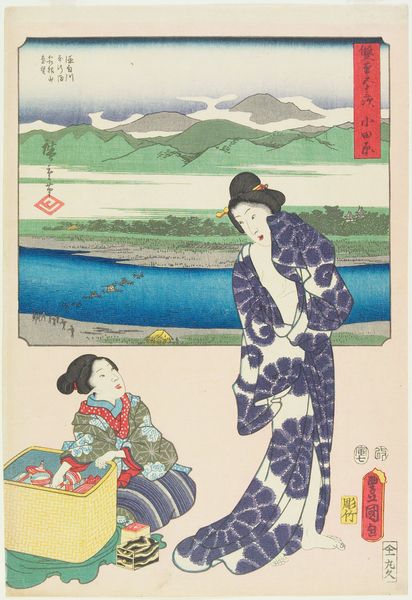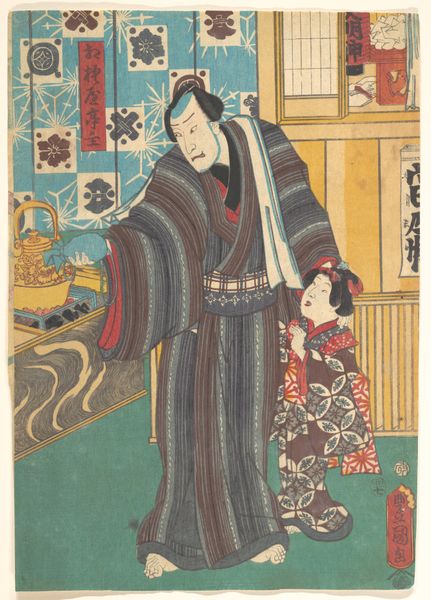
painting, watercolor
#
portrait
#
water colours
#
painting
#
asian-art
#
landscape
#
ukiyo-e
#
figuration
#
watercolor
#
child
#
genre-painting
#
mixed media
#
watercolor
Dimensions: height 347 mm, width 240 mm
Copyright: Rijks Museum: Open Domain
Curator: Here we have Utagawa Kunisada's "Nihonbashi," crafted around 1854, held in the collection of the Rijksmuseum. Editor: There’s a poignant sweetness about this piece. The delicate colors give the whole scene this sort of dreamlike feeling. You’re drawn immediately to the serene face of that woman, but the child pulling at her kimono, his little face full of joy... it's so engaging! Curator: Kunisada, a leading printmaker of his time, excelled in Ukiyo-e, which, broadly translated, means "pictures of the floating world." His work captured the ephemeral pleasures and daily life in Edo period Japan. Notice how the perspective is layered. We've got the figures in the foreground, the bridge behind them, and then a glimpse of Mount Fuji in the distance. Editor: Yeah, and the figures aren't just *there*. They are so intentionally placed. That child with the little marionette or paper doll has got a whole narrative humming around him. Are they tourists? Day trippers? It invites you in, like peering into a moment that continues just beyond the edge of the paper. Curator: The bridge itself, Nihonbashi, held immense symbolic weight; it was considered the zero milestone from which all distances to Edo were measured. Representing it here signifies a connection to the capital’s commerce and culture. Kunisada subtly suggests themes of travel, society, and the relationship between individuals and the bustling metropolis. Editor: Absolutely! And it's all done with such grace. Even in the small details, you see the intention of portraying elegance—the patterns in their kimonos, the precise lines that define each shape. Nothing feels accidental, but everything feels alive! You can feel the air moving. Curator: Kunisada was responding to and also shaping popular taste, and one way we see this is in the integration of landscape views within figurative prints. It broadened appeal, enticing consumers through diverse motifs. He carefully orchestrated these elements to engage audiences with familiar landmarks, fashionable figures, and evocative atmospheres. Editor: It's so moving to reflect how moments lived centuries ago can still resonate, spark new dialogues, make us reflect and make associations. A work like this really feels like a key, unlocking a whole world of perspectives! Curator: Indeed. It showcases art's continuous interplay with society, a snapshot in time continually made relevant by the generations who encounter it.
Comments
No comments
Be the first to comment and join the conversation on the ultimate creative platform.
